George Motz: America's Hamburger Historian
Known Traveler: We caught up with the burger king behind New York's Hamburger America to talk about regional specialties, burgers of the past, and more.
Welcome to the weekend! Here’s what you’ll find in this week’s newsletter:
Known Traveler: George Motz, the man behind Hamburger America in New York, chats about favorite American regional burgers, why the Midwest does burgers so well, and some new finds from the road.
January’s Featured Field Guide: Want to plan a visit to Cleveland? Our full list of favorites is available in our brand-new Field Guide to Cleveland — a free download for our paid subscribers! This 38-page dining guide includes a curated three-day itinerary with 25+ vetted recommendations for breakfast, lunch, dinner, and drinks.
The Order: Coffee cocktails are so hot right now. You’ll want this one to kick off an evening in Nashville.
Weekend Reading: Chicago magazine’s best things to eat,
shares a hidden spot for tacos al pastor, talks with Philadelphia chef Michael Solomonov, and more.Our Known Traveler series checks in with culinary tastemakers to talk about how travel fits into their lives and their work. Today, we catch up with George Motz, hamburger historian and the brains behind New York’s great restaurant Hamburger America.
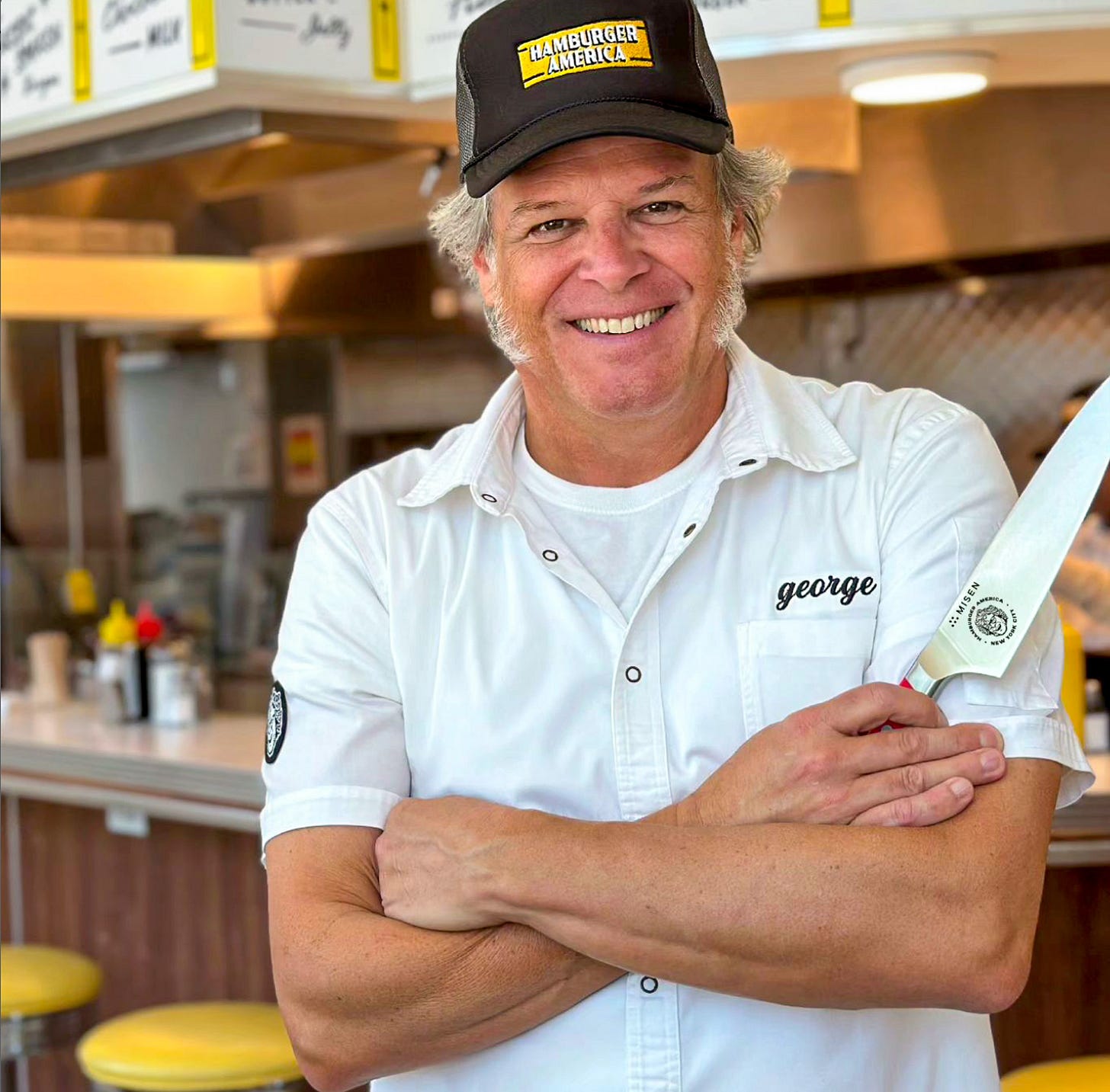
Cheeseburger Paradise
When I visited New York last spring, no restaurant came up more frequently in discussion than Hamburger America, which opened in the fall of 2023. I met up with a lot of people for drinks or dinner during my stay, and each one of them raved about the restaurant. I heard everything from “It’s the best under $20 lunch in New York” to “Don’t miss the ham sandwich.” So I made my way there one evening to find a line down the block of folks waiting for one of the bright yellow stools at the counter (important note: to bypass the line, walk inside to the ordering counter and grab a seat in the dining room). But that formica counter is where the action takes place, where you can watch cooks smashing burger patties, cooking onions, and steaming buns, and where you might catch George Motz himself making your lunch.
At Hamburger America, Motz serves two burgers — a classic smash burger topped with a slice of cheese, mustard, diced onion, and a dill pickle, and the Oklahoma onion burger, an historic offering that’s had a resurgence in the last few years (more on that below). There are also deli classics, like egg and tuna salads and a satisfying hot ham sandwich with melted Swiss. And, there are rotating specials, including a monthly Hamburger Heroes burger, which brings in classic offerings from long-standing purveyors, like the great butter burger from Solly’s Grille in Milwaukee, Wisconsin and the olive burger from Weston's Kewpee Sandwich Shop in Lansing, Michigan.
I loved my visit — I had a smash burger and the hot ham sandwich — and can’t wait to go back the next time I’m in New York. Put it on your list for your next trip, and until then, you can make a round of Oklahoma fried onion burgers (here’s the recipe — it’s absurdly easy and absurdly delicious) and dig into our interview with Motz.
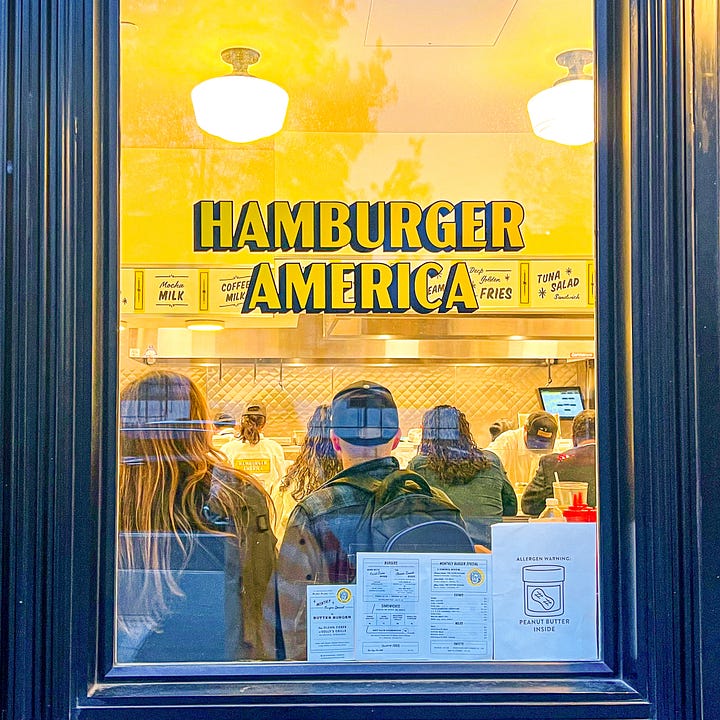
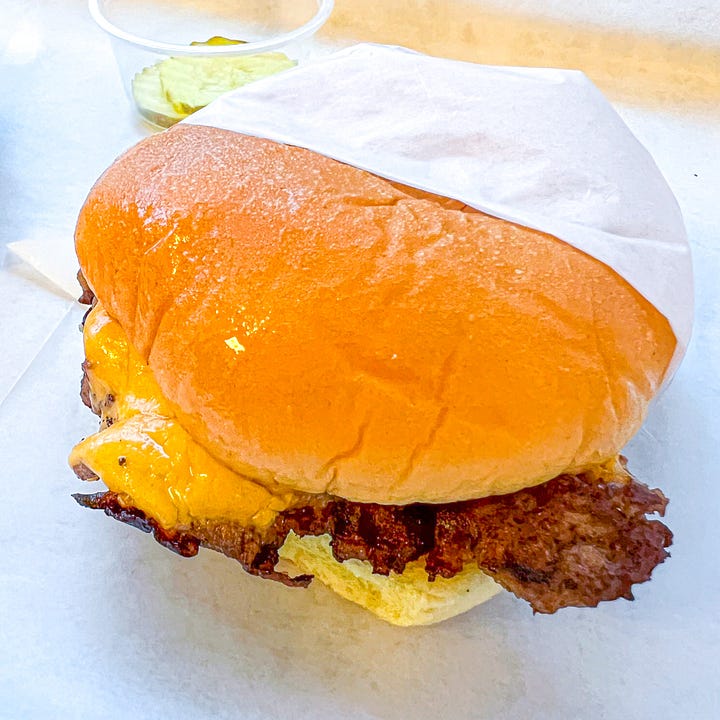
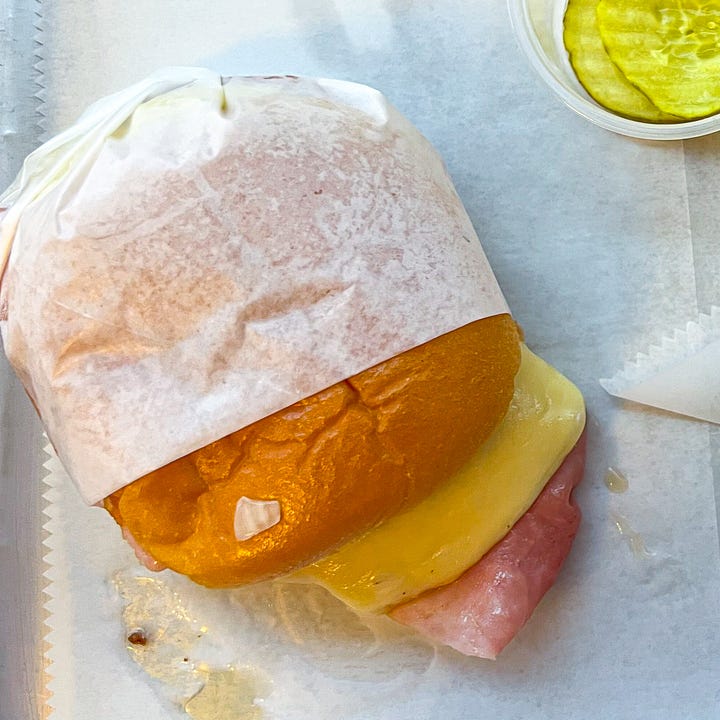
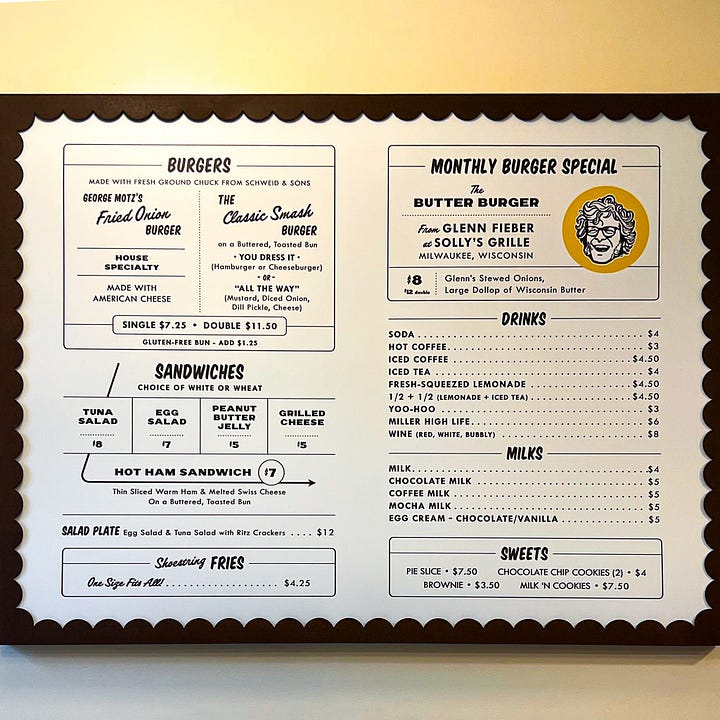
Why are burgers so important to American culture?
Americans love them. You can find them everywhere, they’re easy to consume, they’re easy to understand, and usually very affordable. And there are so many different types of burgers — there’s only a few types of pizza but a burger offers a lot of different options. They’re also one of the only truly American food inventions of the last 125 years. They are one of those foods that satisfies everything you need — it’s salty, sometimes sweet; it’s hot, but cold in parts; it’s crunchy and soft. And it’s very satisfying.
The Oklahoma onion burger is a signature of yours - what do you love about this burger?
The first time I had it, I didn’t think I’d like it since there are so many onions. Then I realized that onions were the first condiment. They predate ketchup and mustard and are an amazing flavoring agent and very inexpensive. And that’s why it started in the first place; it’s a burger that was designed during hard times. It’s mistakenly represented as a Depression-era burger. The hard time is the Great Railroad Strike of 1922. Though it only lasted a few weeks, in the tiny town of El Reno, Oklahoma, the whole town worked for the railroad and an enterprising hamburger person decided to extend his meat supply for the day — the result was the onion burger.
It seems like onion burgers have been a big trend lately around the country.
Onion burgers are definitely a trend — I may have had a hand in it — and it’s not just around the country but around the world. I’ve done some consulting work in Sweden, Japan, Argentina, and other parts of South America and it’s become big in those parts. It’s because we’re in an information age; people want to know where their food comes from. It’s a great time for food history and information. If you can bite into a burger with history connected to it, it tastes that much better. People gravitate to food with some kind of context.
Oklahoma has the onion burger, Wisconsin has the butter burger, Michigan has the olive burger, Illinois has the smash burger. Is there something about the Midwest that is a cradle of these specialty burger styles?
The Midwest is unique for hamburger culture. It’s a place untouched by time and trend. If you think about the East Coast and West Coast, people plow through traditions and trends quickly. In the Midwest they tend to stick around. The Midwest is the cradle of the hamburger and where it really began and took off. It’s also a no-nonsense food item for sustenance and no one does that better than the Midwest.
What are some other favorite regional burger styles?
There’s so many. I love the ones that are simple. The butter burger is a perfect example. The green chile burger in New Mexico; you’ve got chiles and cheese and that’s all you need. The result is fantastic. Also the slugburger in northwestern Mississippi — you have the history of hard times going back to the turn of the century where that burger started.
What can regional burger styles tell us about a place?
There are two ways to look at this. Instagram has created trendy, viral burgers with things like mac and cheese that are done for the Instagram appeal and to bring people into the restaurant. A lot of times they are not good burgers. But then there are trendy burgers that go back 100 years, like the Bernice Original at Shady Glen in Manchester, Connecticut, which is doing this thing where they take cheese and melt it so it curls on the side and it looks like the cheeseburger has a crown. They've been doing this for so long that it’s a regional style based on a trend that happened 70, 80 years ago.
Then there are also the ones that involve local ingredients like butter in Wisconsin or green chiles in New Mexico, where location dictates what the burger tastes like. In Texas, you have shrettuce, which is chiffonade iceberg lettuce, a big pile of it. Then on the West coast, the regional style of lettuce is a big chunk of the heart of the iceberg. So you know where you are based on the style of the lettuce.
You have the Cuban frita in Miami, which is a burger that came from Cuba during the revolution of the late 1950s. You can’t get a Cuban frita in Cuba, but the best ones are in South Florida.
“If you can bite into a burger with history connected to it, it tastes that much better. People gravitate to food with some kind of context.” — George Motz
Swensons and Ben’s Chili Bowl are coming up in February and March for the Hamburger Heroes pop-up. What is your goal for this series?
I opened a restaurant that is a piece of living history, and the idea was to create a place where people can explore the hamburger history of America and the world. At the same time, it’s a high-functioning counter that feels great and also tastes great. And to do that, I had to find a way to give a nod to the people who put me in that position in the first place. Hamburger Heroes people, their grandsons and granddaughters, have been doing the same thing in their restaurants for 100 years. They’ve kept those traditions alive. It’s showing the public that I respect what they’ve done and in turn they respect the fact that I’ve highlighted them and brought them to New York. It’s a fun, symbiotic relationship.
You also do a single-day Future Legends lunch series, and featured one of my favorites, the Burger Box from Cordelia in Cleveland.
That was wild. I knew [chef Vinnie Cimino] was a big deal, but all the ex-Clevelanders in the city went crazy and we sold out in an hour and a half. Next we’re doing Mark Tripp [on January 29], who is a big hit on the West Side of L.A. We’re prepared now, and he’s going to bring a lot of burgers.
What does Mark Tripp do that’s special?
He's a hyper-purist. He sells burgers that are beef and bun. “Want cheese? That’s a cheeseburger.” He sells doubles, triples, and then you dress it yourself. “You can ruin it all you want.” What he does is blend bacon into his beef grind, and uses no seasoning at all. I love the guy because he only works on the street doing a pop-up. And that’s truly the embodiment of 125 years ago - there were no hamburger restaurants. There were just pop-ups at the fair or on the street. It’s a big part of history.
What do you look for when selecting Future Legends?
I’m looking at people who would like a little exposure and are maybe not getting enough. Or, they’re ones that are about to take off.
Now that you have a restaurant, what does travel look like for you? How often do you get to hit the road for burgers?
I have a great team, and the restaurant is high-functioning. I have 40 employees and three managers, and we set it up for success. That allows me to not be there every moment. I show up for lunch six days a week. My sixth book is due in two weeks. The travel for that is complete and I still get to travel but not as much as I used to.
Do you have any favorite burger discoveries from your recent travels?
Of course. People think I’ve been to every spot but no, I haven’t. I take all my burger leads — like if someone says I have to go try this place in Milwaukee — and I do research to see if it’s worth it. I’ve eaten more burgers in more places than you have, but there’s still so much out there. Every time I’m on the road I’m making discoveries. It’s endless.
I had my first real horseshoe last summer at Sunrise Cafe in Springfield, Illinois, the home of the horseshoe. A few places do it, but the best is Sunrise Cafe. It’s a utilitarian-looking diner but the burger is perfect. It had cheese sauce and a great tasting burger. It’s open-faced, so it’s the only burger I’ll eat with a knife and fork because you have to.
I ended up going to a lot of old-school places I hadn’t had a chance to get to. We’ve been doing this for 20 years and in 20 years you couldn’t get to all the classic spots. Some of my favorites have closed; there’s no way to protect them all.
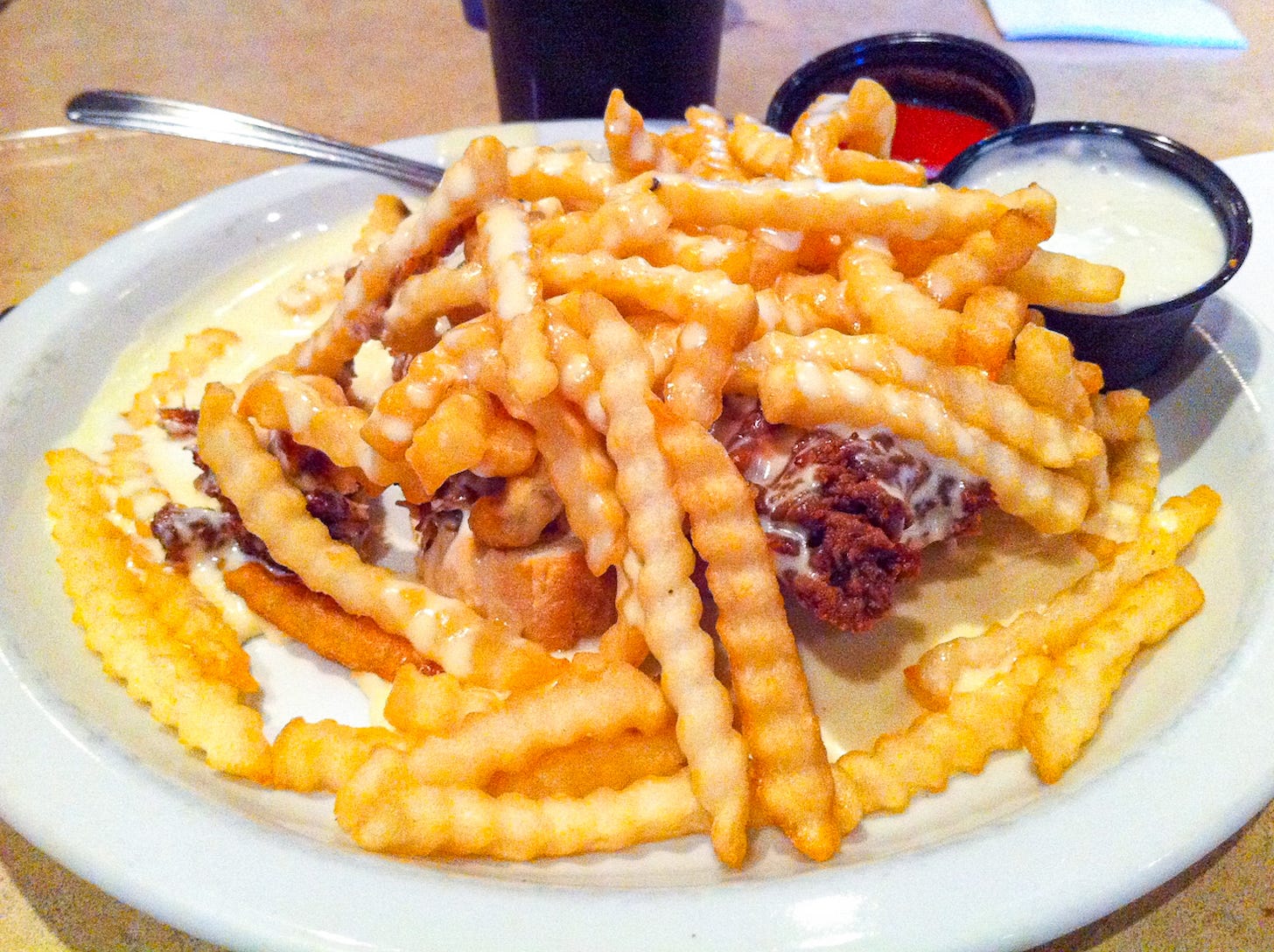
I saw that you’ve highlighted some burgers from closed restaurants.
One of the Hamburger Heroes monthly burgers was the Doodleburger from New Haven. That was a lot of fun for me, since it was a burger no one had had in 16 years. There’s a regular at the restaurant who went to Yale, who was like “You have to bring back this burger.” So I did some research, looked at old photos, and put it back together.
It’s served with a paper ramekin of red relish, and you would see people who went to Yale or grew up in New Haven taking the paper ramekin and turning it upside down over the burger. I knew right away who was from New Haven. We made 4,000 burgers that month and I think half were Yalies or people from New Haven - it was great to see people enjoying that burger again. Some people cried. We ended up in the Yale Alumni Magazine, which wrote a story about bringing it back.
What’s in the red relish?
It’s just a standard red relish made from peppers and sugar. It looks like a salsa, with a little spice to it. It’s not ketchup but something close. Red relish was one of the original burger condiments.
“I love looking at regional foodways and connecting the dots to other things in the world or to other regions.”
— George Motz
Where do you like to get away from New York for the weekend?
I go to visit my mom and dad in the Hamptons. My entire family is out in the Hamptons. I’m a big beach guy and I like to escape out there for a day or two. I hosted Thanksgiving this year and rented a house out there. I love cooking at the beach too — we grill, and I’m constantly trying to find new ways to make food. I’ll bring something regional and cook it over a channel grill or open flame. I take the challenge very seriously.
You’re not just a burger guy. What other types of regional food do you like to seek out when traveling?
Everything. I love oysters and eat them around the country — East Coast, West Coast. I grew up in New York but I have a lot of family in South Carolina, so I love exploring the Low Country. I love looking at regional foodways and connecting the dots to other things in the world or to other regions.
One of my favorite things to do is go into every supermarket and just wander the aisles and look at spices and seasonings and see what’s happening there. I spend a lot of time in grocery stores for fun and come home with spices and sauces and rubs. It’s the best.
155 W Houston St, New York, NY | @hamburger_america
Download all our Cleveland Recommendations!
Our latest American Weekender Field Guide puts together all our recommendations for breakfast, lunch, dinner, and drinks in Cleveland organized into a three-day dining itinerary.
Our Field Guide to Cleveland is included as a free download for all paid subscribers to the American Weekender newsletter. This 38-page dining guide includes more than two dozen recommendations, is downloadable for offline reading, includes Google Maps and Instagram links, and is formatted for your phone — perfect for easy reference on your next trip. Download your free field guide using the discount code found in January’s Weekend Getaway newsletter. (That same code can also be used to download any of our other Field Guides for free!)
The Tipsy Jitters at Martha My Dear
NASHVILLE, TENN. — On our most recent visit to Nashville, we headed to Martha My Dear for a round of drinks before dinner. We loved the great service and low-key vibe as well as the approachable yet dialed-in drinks. The standout cocktail, The Tipsy Jitters, has also become the bar’s signature. Made with cold brew from local Elegy Coffee, the espresso martini variation includes vodka, Licor 43, and Averna, plus a cap of Angostura bitters-infused cream. The drink is rich and bittersweet, and would make a great winter nightcap. Want to make it at home? Imbibe has the recipe.
2503 Gallatin Ave, Nashville, TN | @marthas_nashville
ILLINOIS
The 25 Best Things to Eat Right Now: Amy’s team of food writers at Chicago magazine put together a list of their most memorable bites of the moment. Yes, there’s a burger (this one from Rosewood Tavern), but you’ll also find pistachio croissants, a warming pozole verde, grilled oysters, Taiwanese fried chicken, and — hear us out — a chef’s take on SpaghettiOs.
ILLINOIS
Tacos al pastor from where, exactly? Dennis Lee of
visits what I think is Chicago’s best spot for tacos al pastor. It’s at a place called Asian Cuisine Express. Again, hear us out.PENNSYLVANIA
A Q&A with Zahav’s Michael Solomonov: In his newsletter,
, Ari talks with chef Michael Solomonov about his new cookbook. “Zahav Home is really just what it's like to cook at home,” says Solomonov. “The recipes were all done on the fly, starting with ingredients and cooking through each recipe in real time in my kitchen.”PLUS
Samantha Brown on 25 years in Travel TV: Samantha Brown is a Travel Channel OG. I remember watching her show Great Hotels decades ago and gawking at all the luxury locations I could never afford. (Someday, Little Palm Island. Someday.) Now, as her current show, Samantha Brown’s Places to Love, hits the PBS airwaves for its eighth season, USA Today’s Nathan Diller talks to her about how the travel industry has evolved over her career. “Before, when I started traveling, I thought it was really for the privileged — people privileged with money, time and then confidence,” Brown says. “And I think with the internet and YouTube and social media, you see your type of person traveling. Maybe it's a budget traveler. Maybe it's someone with a lot more diversity than I represent, and all of a sudden now it becomes more attainable to you, and I think that's the brilliant way that it's really changed things.”
— Compiled by Kenney Marlatt
Want more? Chat with us on Substack, download our Field Guides, check out our archives, or follow us on Instagram @americanweekender. We’ll be back next week.





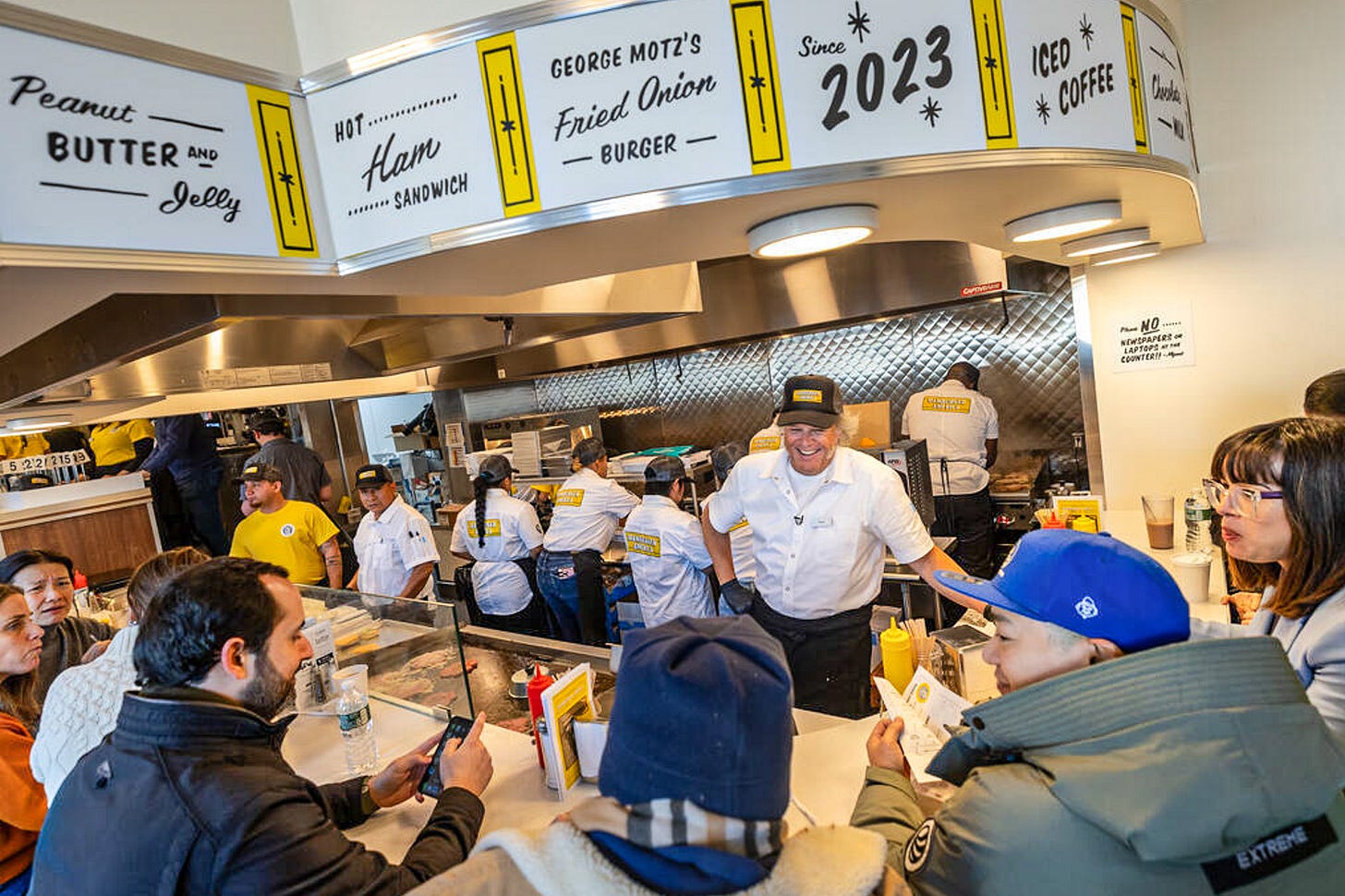

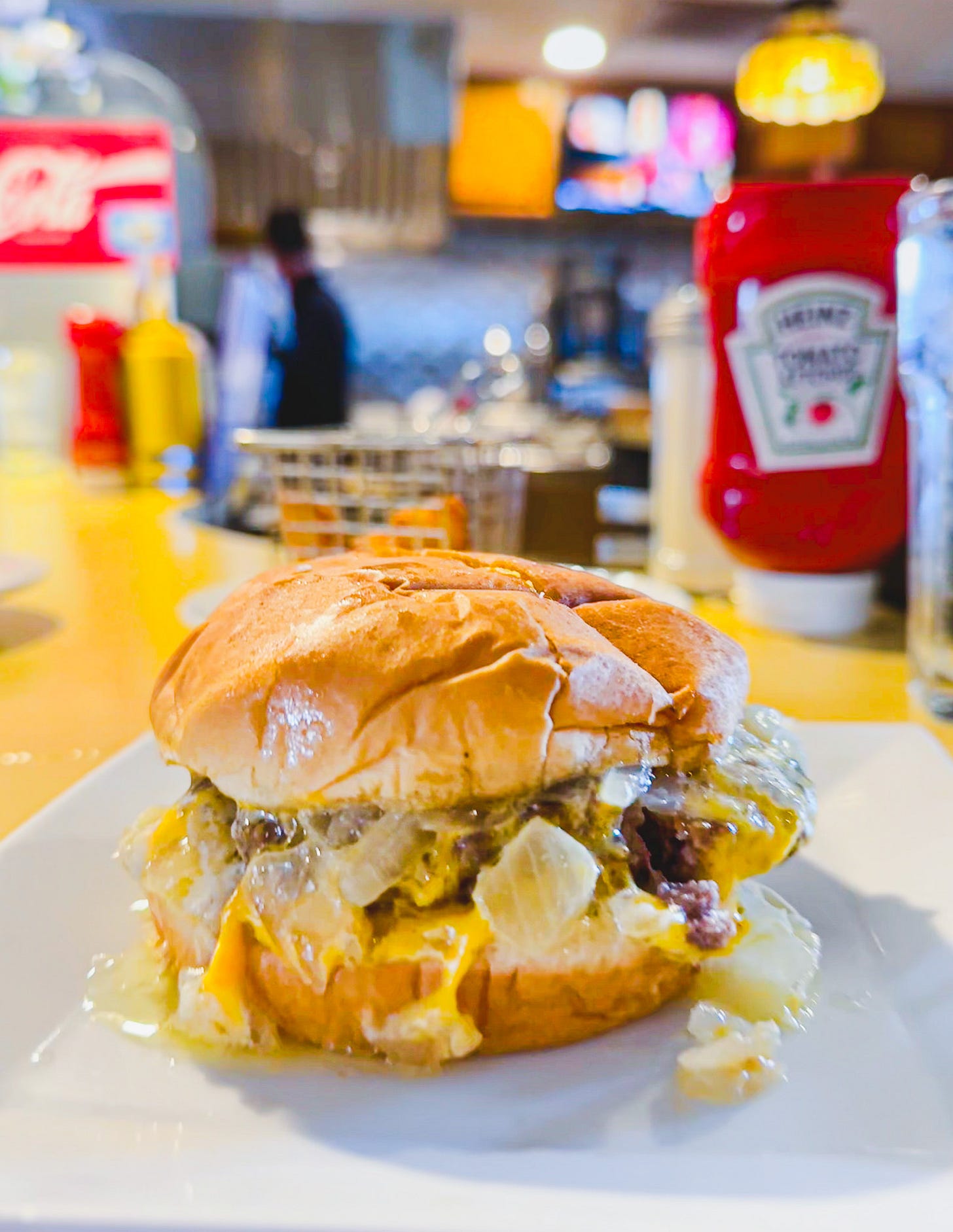
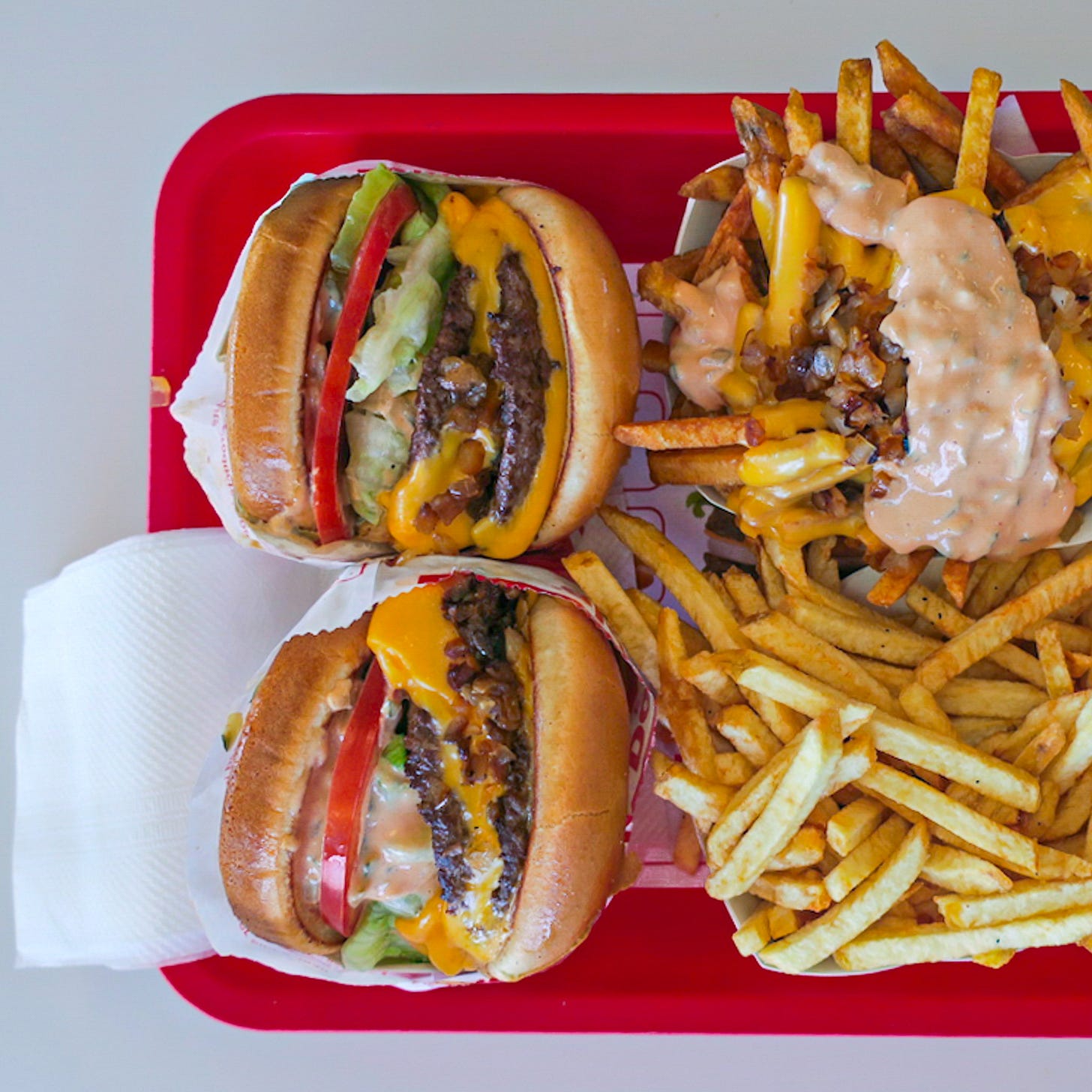
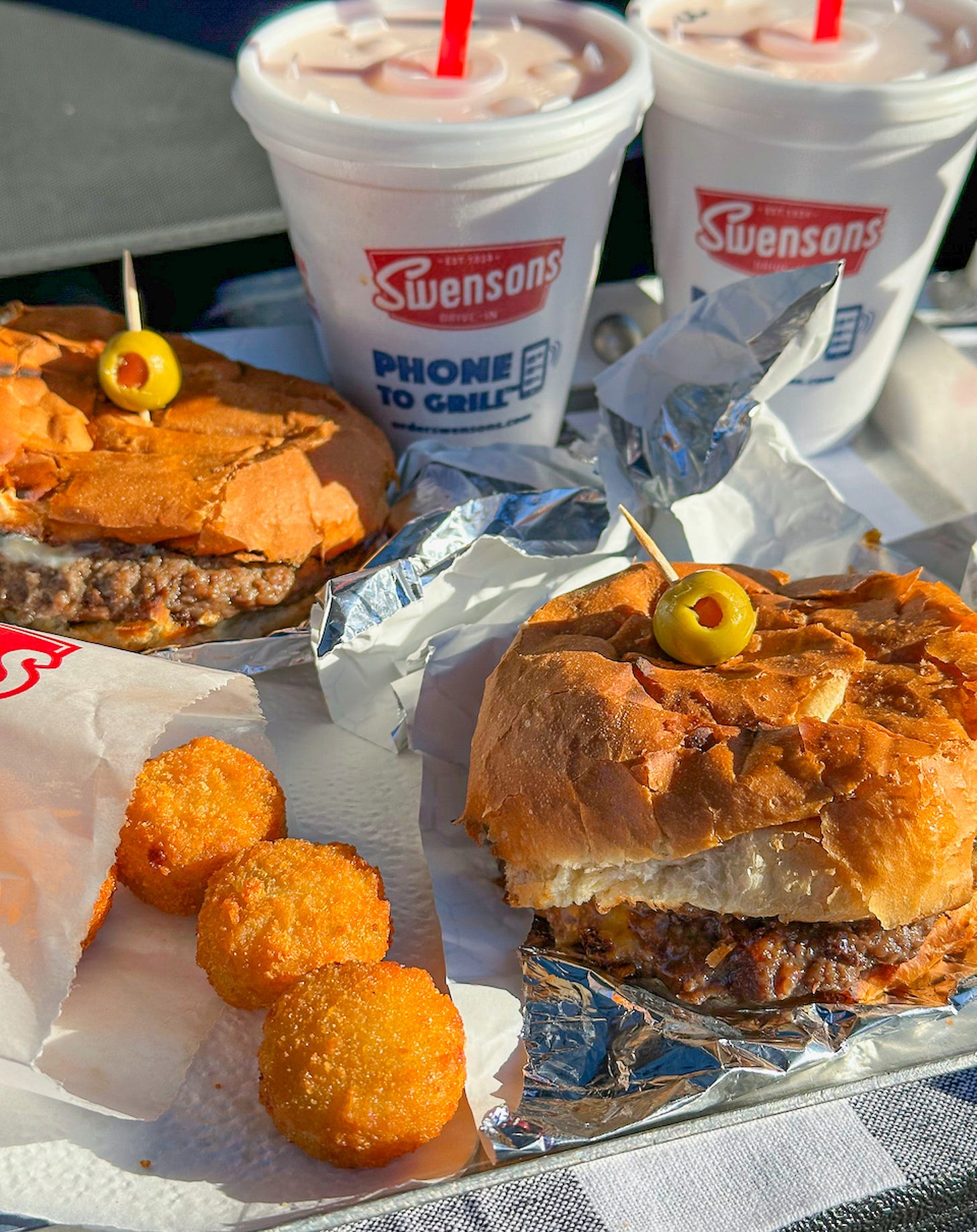
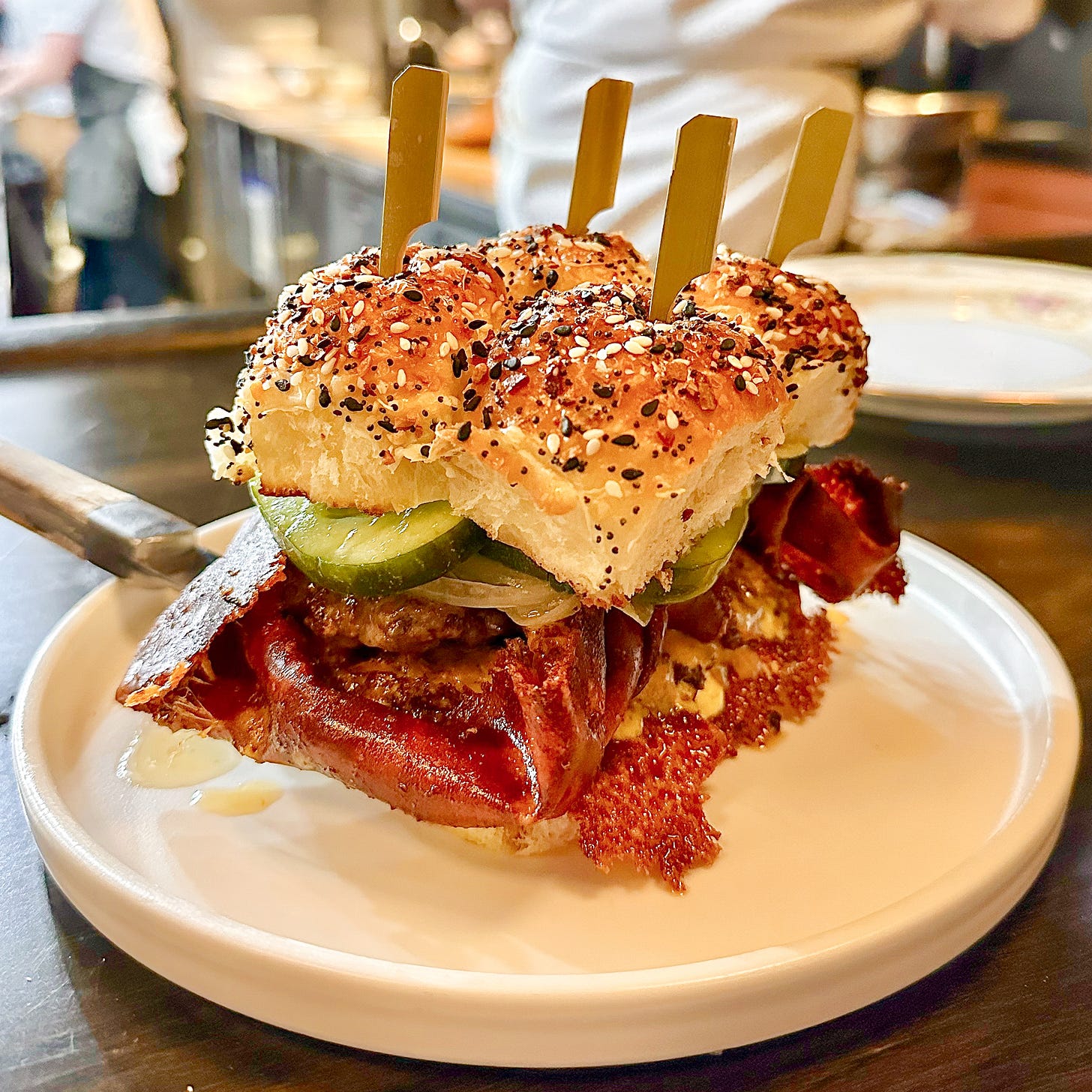



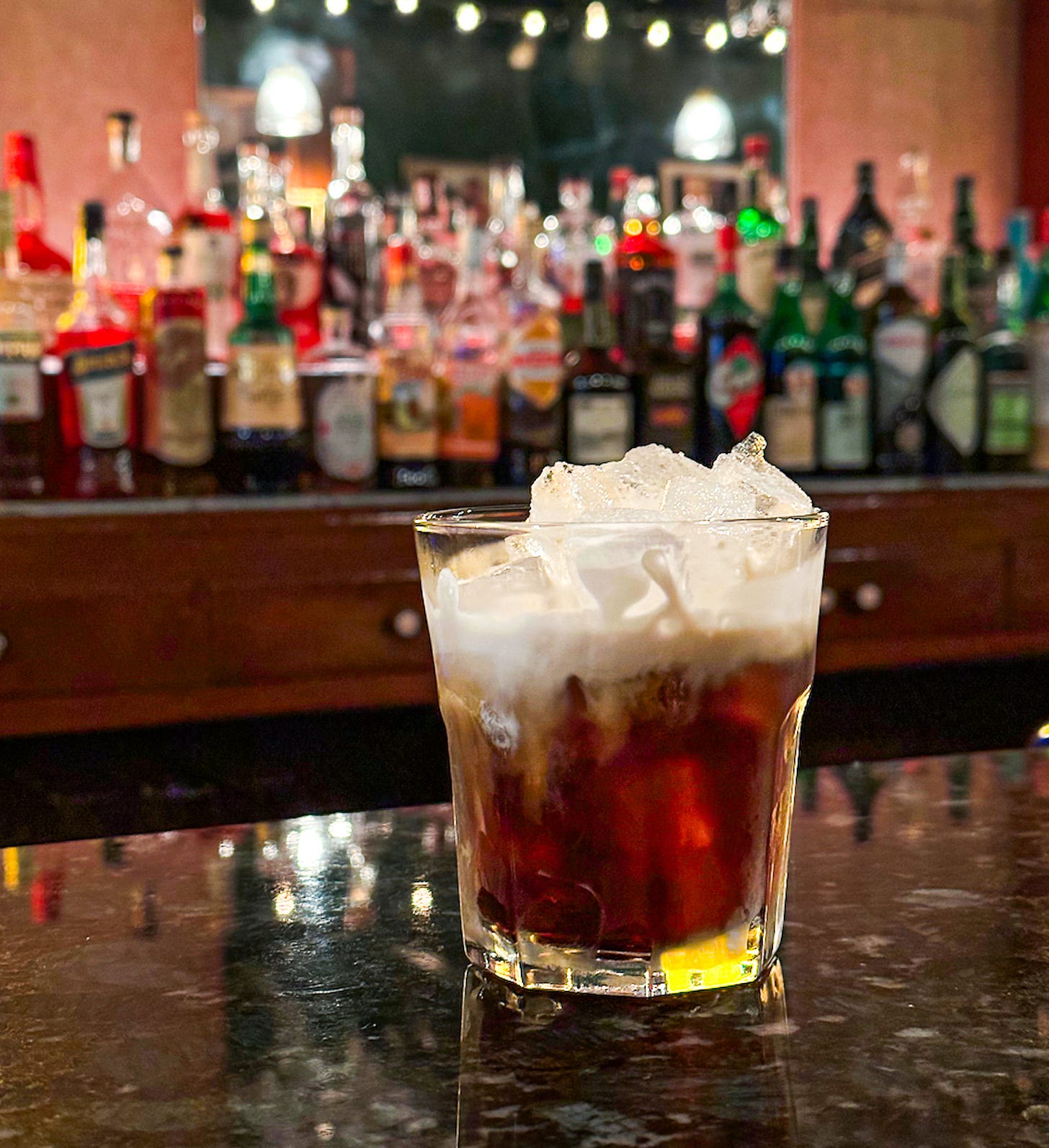


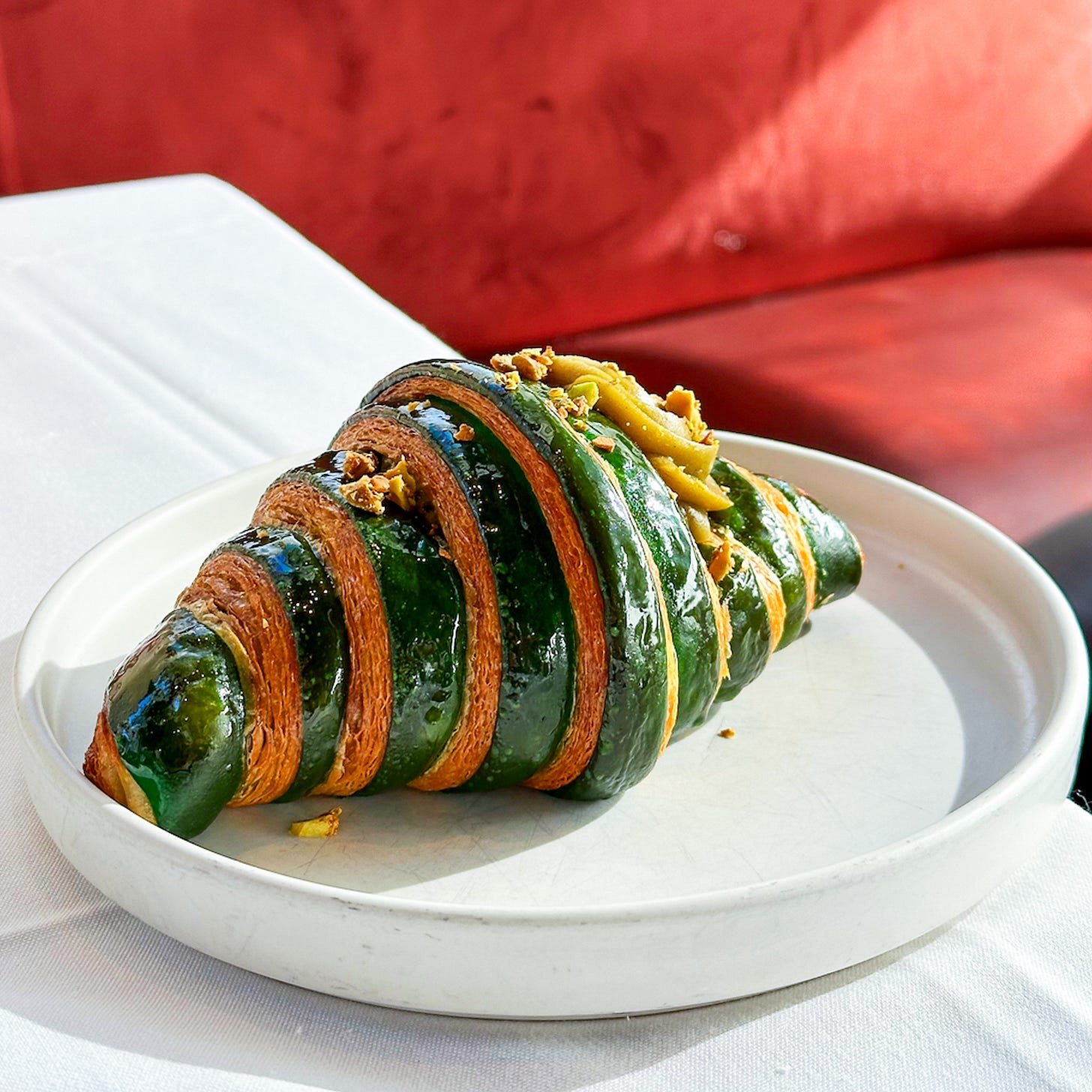

Butter Burger 🍔 😋